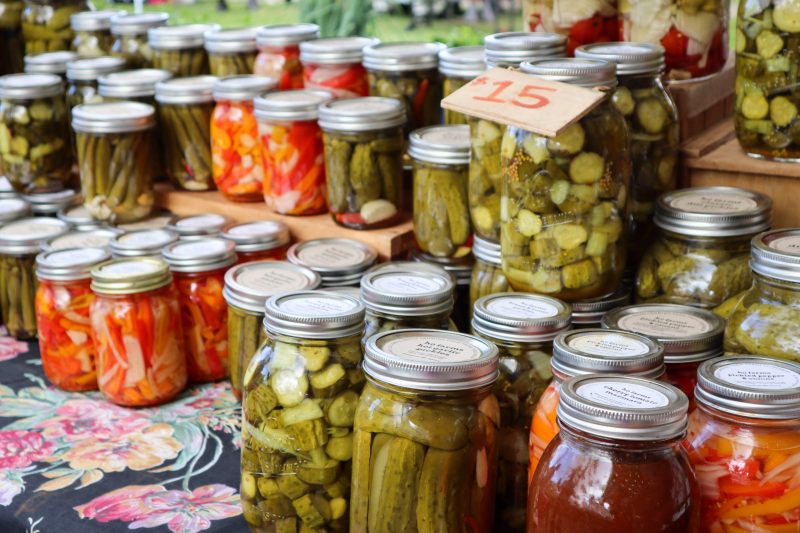As many rush to vitamins and probiotics in times of hypochondria, it’s easy to wonder whether there’s a more convenient and incorporative solution.
With kombucha, sourdough, kimchi, sauerkraut and more rising in popularity, it’s no surprise that the fermented food and drink market is expected to grow.
Following the unexpected waves of Covid-19, thousands are resorting to immunity-boosting and health-promoting foods. According to the IRI, 6 in 10 Brits are said to be starting their day with some form of vitamins, minerals or supplements. Speaking from personal experience, I have turned to such remedies in times of ill health (and hangovers). But why the global pique in interest?
Whilst items such as kimchi have been a staple to different cultures worldwide, chefs and individuals are acknowledging the benefits of gut-helping bacteria and incorporating that into their daily consumptions. Technavio, a leading market research company, expect the market to grow by $533 million through 2026. Wondering why? Continue reading.
Nottingham-based food provider Living Goods specialise in all things fermented and gave us some top tips for those interested in following the craze.
For people who don’t know, what is cultured food?
When we refer to cultured food, it’s anything that’s fermented. It could be cultured in different ways, so for example, through the introduction of a starter culture like kombucha or sourdough where a previous batch helps start another. Or through wild fermentation where naturally occurring bacteria and yeast help break down the food to give you the fermented product, like in sauerkraut.
How do you carry out the fermenting process?
The fermenting process can vary from product to product so, for example, when we make a pickle it’s as simple as taking the weight of the vegetable or fruit we want to pickle, adding the weight of the water needed to fully submerge the vegetable and then taking that combined weight and adding 2% salt, by weight, to that product and leaving it to ferment until it’s at our desired sourness. Other ferments can be a little bit more complex such as tempeh where substrates are inoculated with certain strains of fungus and kept at certain temperatures.
Is it safe to do at home?
Fermenting is safe to do at home. Starting with a simple pickle is unbelievably easy and if you’re and if you’re concerned about any of the safety implications, there’s plenty of information inline backing up different parts of the process like keeping the vegetable submerged or different salt percentages used. As with any food preparation, following standard practice is obviously very important.
What are the benefits of fermented foods?
The main benefit associated with fermented food is improved gut health and this is mainly because fermented foods introduce probiotic bacteria into your gut which helps to balance out the other bacteria’s that are naturally present in your gut as well. There have actually been a few places and a few articles that have linked a healthy gut to a healthy mind so fermented foods can make you happy.
What are some common cultured everyday foods that people may not be aware of?
Sauerkraut comes to mind when I think of common cultured foods and that’s mainly because when I first started fermenting, I remember salting some cabbages, letting them sit for a few weeks and being amazed by the end product. Now it’s a staple in my diet and I feel it’s in more recipes than you think. Another one is tabasco which is actually kept in barrels for three years to ferment before its even served so that’s another great one. Sourdough is also a really good example of this. It’s gained a lot of publicity recently.
How closely related are fermented foods and probiotics?
Probiotics are present in many fermented foods and I feel that when most people think of probiotics, they think of the little capsules that you can take. Whilst there’s nothing wrong with that, or taking them in general, fermented foods come with all the benefits of those capsules and they taste pretty good. Especially when you eat them in their raw state. That’s where all the health benefits can come in.
What foods do you specialise in?
We want to bring fermentation to the forefront in the most accessible way possible. We did have a pretty popular burger night which made sure we knew a thing or two about burgers but … I’d say the bulk of what we are doing at Living Foods at the minute is around koji, tempeh and lacto-fermented foods. Simply because of their versatility and we’re always aiming to learn more about any fermented product and how we can apply it to a menu.
Where do you source your foods from?
We try to source our food from as many quality local suppliers as possible. These include Batched Bakehouse for our burger buns and The Fruit Basket for fruit and veg.
Is it predominantly vegan foods?
Yes all of our food is vegan. It’s not something we push a lot because we want the focus to be on the fermented element and we would rather people be pleasantly surprised to find out that they ate something plant-based rather than being put off in the first place and again, the attention being on the fermented product.
The wonderful team behind Living Goods are hosting their next event on the 15th of December at the Jolly Pug in Sherwood – don’t miss it! Be sure to check out their Instagram @living_goods_ for all updates, tips and documentation of the fermenting process.
Lead Image Credit: Little plant on Unsplash.

